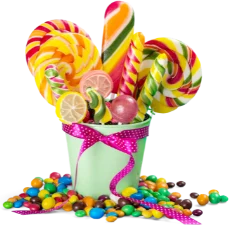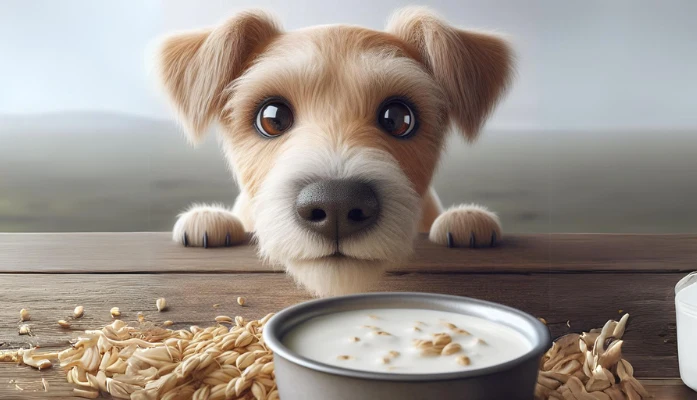The Christmas season brings joy and festivity, but for pet owners, it also brings a set of challenges to keep our furry friends safe. During this time, our homes transform with decorations, foods, and plants, many of which can be hazardous to our pets. And then there’s the increase in visitors and the change in your daily routine, all of which can give your pet anxiety and stress.
In this article, we’re going to learn:
- Key Christmas hazards for pets, including toxic plants and foods.
- Effective strategies to keep your pets safe from common holiday dangers.
- Tips to manage holiday stress and ensure your pet’s well-being.
This is a wonderful time of year, but keep in mind that our pets don’t understand that, so we need to find a balance where we make our holiday celebrations enjoyable and safe for us and them.
Common Christmas Hazards for Pets
The holiday season, brimming with festivities, also brings several risks to our beloved pets. Being aware of these hazards is the first step to ensure their safety. Let’s delve into some of the most common dangers:
Hazardous Plants
They’re pretty and so festive, but many plants associated with Christmas can be toxic to pets. Here’s a list of some you should be cautious about:
- Poinsettias: Cause irritation to the mouth and stomach, sometimes causing vomiting.
- Mistletoe: Can cause gastrointestinal upset, cardiovascular problems, and even be fatal if ingested.
- Holly: The berries and leaves can cause nausea, diarrhea, and vomiting.
- Amaryllis: Especially dangerous, can cause vomiting, changes in blood pressure, and seizures.
- Christmas Cactus: Less toxic, but can still cause vomiting and diarrhea.
Dangerous Foods
The average American gains roughly two pounds during the holiday season (did you think it would be higher, me too, but it’s not) and most of it comes from our delightful seasonal treats. Sure, we’ve all been looking forward to them for months, but those very things that bring us joy can be perilous for our pets. Keep an eye out for the following:
- Chocolate: Contains theobromine and caffeine, which are toxic to pets.
- Xylitol: A common sweetener in sugar-free treats that can cause liver failure and hypoglycemia.
- Alcohol: Even small amounts can be dangerous, causing vomiting, diarrhea, difficulty breathing, and more.
- Grapes and Raisins: Can cause kidney failure in dogs.
- Onions and Garlic: Can lead to red blood cell damage and gastroenteritis.
- Macadamia Nuts: Toxic to dogs, causing weakness, vomiting, tremors, and hyperthermia.
- Fatty Foods: Such as buttery dishes and meat trimmings can cause pancreatitis.
Decorations and Ornaments
Sparkling tinsel (especially the loose strands of tinsel), twinkling lights, and colorful ornaments are essentially pet toys waiting to be played with, especially if you have a curious cat! These items can cause choking hazards, intestinal blockages, or electrical shocks if chewed on.

Safety Tips for Pets Around Holiday Decorations and Plants
The holiday season is a time when our homes are adorned with festive decorations and plants. While these add to the festive atmosphere, they can pose risks to our pets. Here are some tips to keep your furry friends safe:
Securing Decorations
- Ensure that all decorations, especially those that are small or have dangling parts, are out of reach.
- Secure your Christmas tree to prevent it from toppling over if a curious pet tries to climb it.
- Cover electrical cords or use cord protectors to prevent chewing, which can lead to electric shocks.
Safe Plant Alternatives
- Opt for artificial plants instead of real poinsettias, mistletoe, and holly. If you do use real plants, place them well out of your pet’s reach.
- Consider pet-safe plants like Christmas cactus (still shouldn’t be eaten, so keep out of reach of pets) or orchids, which can still bring festive cheer without the risk.
Creating a Pet-Safe Space
- Designate a comfortable, quiet area for your pet away from the hustle and bustle of holiday gatherings.
- Include their favorite bed, toys, and access to water.
- If your pet has a crate that provides him or her with a sense of safety, make sure it’s easily accessible but separated from the festivities.
- Ensure this space is free from holiday decor that might cause harm.
The holidays are rough on pets, especially older dogs, by taking these precautions, you can help ensure that your pets enjoy the holidays as much as you do, without any undue risks.
Food Safety for Pets During Christmas
We’ve covered the toxic foods and the potentially poisonous sweets that are everywhere during this time of year, but it’s not just specific foods you must watch out for… it’s the overall abundance of food during the festive season that can be a problem for pets.
We’ve all been there! You pop a sugar cookie in your mouth and your dog is staring at you with those ridiculously cute eyes – you know the ones – the ones that say that he/she hasn’t been fed in five weeks! So, you feel bad and you want to share the moment. Every dog owner can relate, but obesity is currently the greatest threat to your dog’s longevity. That extra sugar cookie may not make a difference to your waistline, but it will on your pet’s.
Here are some tips to ensure your pets stay safe while you enjoy your holiday feasts:
Safe Feeding Practices
- Stick to your pet’s regular diet and feeding schedule as much as possible to avoid gastrointestinal upset.
- Avoid giving them fatty foods, bones, or any unfamiliar treats that could lead to pancreatitis or choking hazards.
Preparing Pet-Friendly Holiday Treats
- Consider making special holiday treats for your pets using safe ingredients they love by using our homemade dog and cat treat recipes as a healthy foundation.
- Think about making a double batch of healthy homemade snacks and giving some to your family and friends who have pets.

Never give your pet foods containing Xylitol

In 10 minutes you could make these Carrot Oats Dog Biscuits instead!
Identifying Toxic Foods
- Be vigilant about keeping toxic foods like chocolate, products containing xylitol, grapes, raisins, onions, garlic, and macadamia nuts out of your pet’s reach.
- Educate your family and guests about not feeding these dangerous items to your pets.
By following these guidelines, you can help ensure your pets enjoy the holidays without any food-related mishaps. Remember, a little caution can go a long way in protecting your pet’s health during this festive season. And be on the lookout for tell-tale signs that your pet’s health is in trouble.
Managing Visitors and Holiday Stress for Pets
The influx of visitors during the holiday season can be overwhelming for pets. It can be overwhelming for pet owners as well!
While we don’t have any words of wisdom for you personally, we do have a few strategies you can use to help manage your pet’s stress:
Preparing Pets for Increased Foot Traffic
Gradually acclimate your pets to having more people around. If possible, introduce them to visitors in a controlled, calm environment. Be certain that your visitors know your pet’s boundaries and preferences and don’t hesitate to speak up on behalf of your pet, after all, they can’t communicate as directly as you can.
Please remember that just like us, every pet is different. Some pets may not be comfortable with strangers or may have specific fears or triggers that you can’t help them manage. In those situations, management becomes a matter of avoidance. If your dog or cat has severe anxiety around strangers, consider putting their needs first, and asking if someone else can host your Christmas party or holiday gathering instead.

Creating a Safe and Quiet Retreat
Set up a quiet space away from the noise and activity where your pet can relax. This could be a separate room or a cozy corner with their bed, toys, and water. You may consider using calming aids like pheromone diffusers or soft music to help soothe anxious pets. Some pet owners have had great luck with CBD oil.
Monitoring Pet Behavior for Stress Signs
Keep an eye out for signs of stress in your pets, such as excessive panting, hiding, or changes in eating habits. If you notice your pet is stressed, give them a break from the festivities and let them retreat to their safe space.
If you have children visiting that your pet doesn’t know well, keep a close eye on the children when they interact with your four-legged companion. Not all kids know how to approach dogs and cats correctly, and very few can identify when a pet wants to be left alone.
By taking these steps, you can help ensure that your pets feel secure and comfortable, even amidst the hustle and bustle of holiday celebrations.
Additional Safety Considerations
Apart from the usual hazards of plants, foods, and decorations, there are a few other things to consider for your pet’s safety during the holidays:
Cold Weather Hazards
Even dogs (cats will likely avoid snow and ice) who enjoy snow on the ground, need to be monitored to ensure they’re properly protected from the cold. Provide warm shelter and check their paws for signs of frostbite or irritation from ice-melting chemicals.
Antifreeze, often used in colder months, is extremely toxic to pets. Store it securely and clean up any spills immediately.
Fireworks and Noise Aversion Strategies
New Year’s Eve fireworks or loud celebrations can be terrifying for pets. Keep them indoors in a secure and comfortable space during fireworks displays. And if your dog or cat has noticeable anxiety when it comes to loud noises, consider using noise-cancellation or soothing music to minimize the impact of loud sounds.
Remember, while you may love the colorful, loud explosions in the sky, your pets don’t understand so to them, the sky is literally falling, and they’re terrified.
Traveling with Pets During Holidays
If traveling with your beloved dog or precious cat in the car, ensure they are comfortable and safe during the journey. Use appropriate carriers or harnesses and take regular breaks on long trips.
On the other hand, if you’re leaving your pet behind, choose a reliable pet sitter or boarding facility and provide them with detailed care instructions and check-in a few times.
Conclusion
The holiday season is a time of joy and celebration, but it’s important to remember the safety and well-being of our furry family members. In this article, we’ve covered a variety of potential hazards that pets may face during Christmas, from toxic plants and foods to the stress of having visitors and loud noises. We’ve also discussed ways to keep them safe and comfortable, ensuring that the festivities are enjoyable for everyone.
Key takeaways include:
More To Discover
- Scientists Finally Decoded The Enigmatic Cat Purr! Dive Deep or Skim the Fun Version – Your Choice
- Ultimate Guide to Feline Obesity: The Heartfelt Journey to Your Cat’s Healthier Tomorrow (Prevention, Action Lists, Assessment, Expert Tips)
- A Guide to Finding the Best Pet Sitter for Your Beloved Dog or Cat
- Cat First Aid: Essential Tips and Techniques Every Cat Owner Should Know
- Being aware of common holiday hazards like certain plants, foods, and decorations.
- Implementing strategies to protect pets from these dangers.
- Understanding and addressing the unique needs of pets during the busy and noisy holiday season.
As a human being, you want to enjoy the holiday season and soak up as many of the festivities as possible, but, as a pet owner, your vigilance and preparation can make a significant difference in your pet’s experience of the holiday season.
For those looking to deepen their understanding of pet care, consider exploring our articles on dog obesity as well as cat obesity, along with our articles on keeping your cat or dog, as healthy as possible.

























